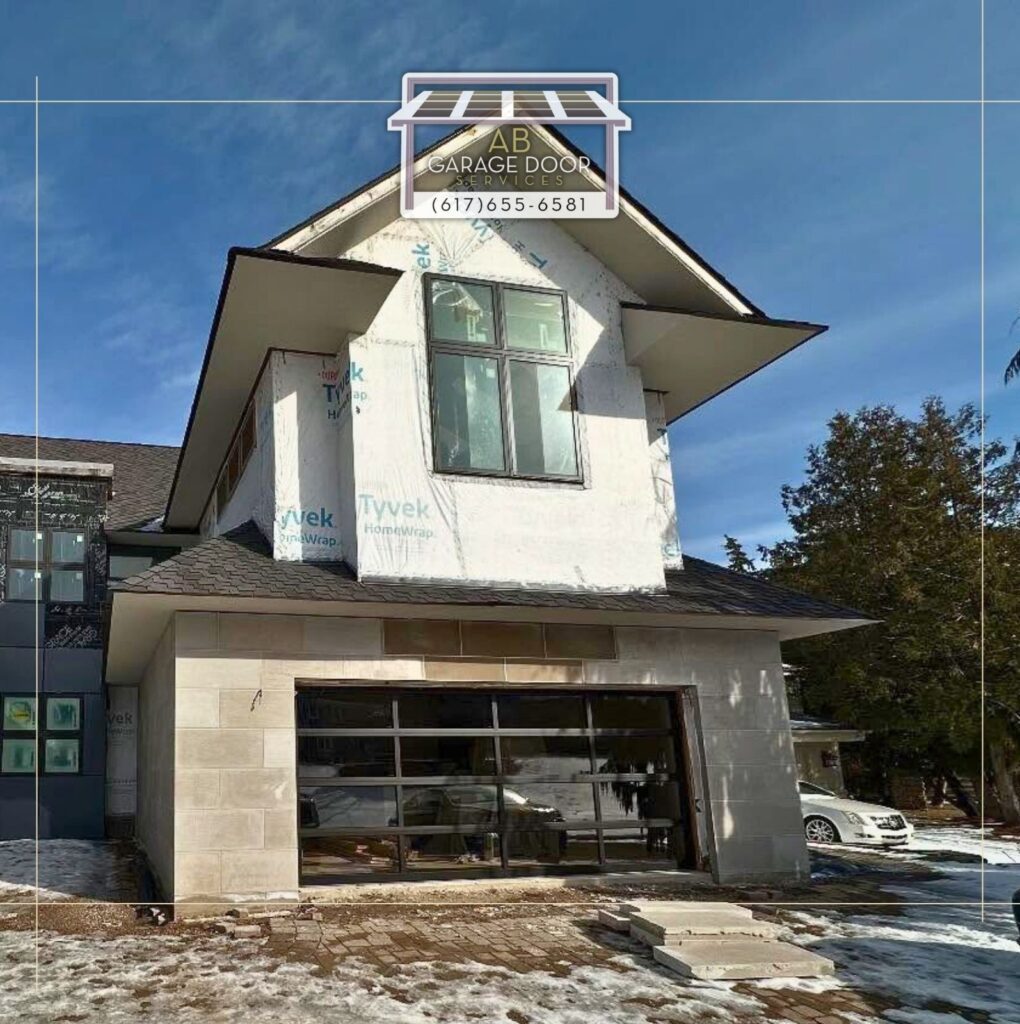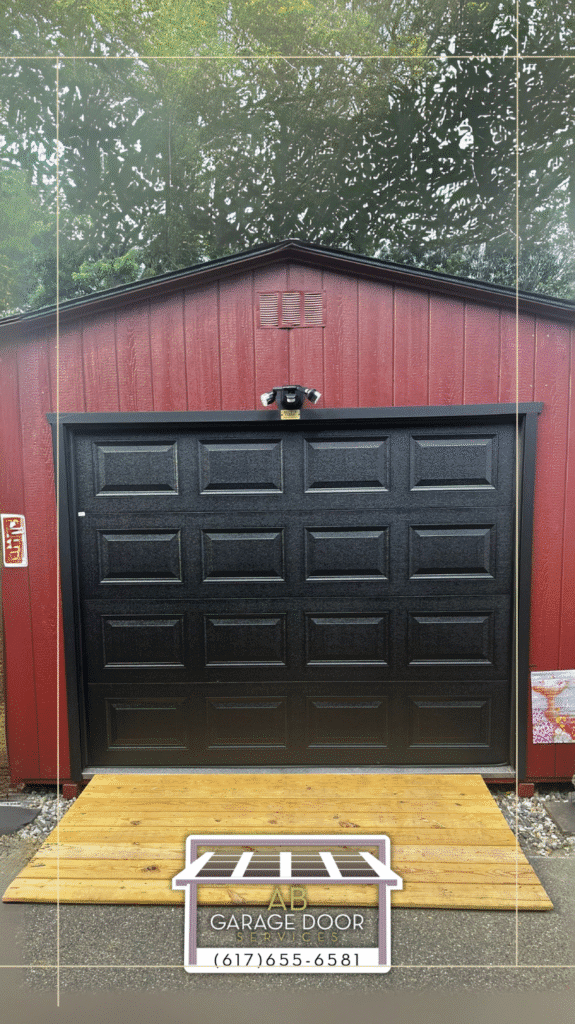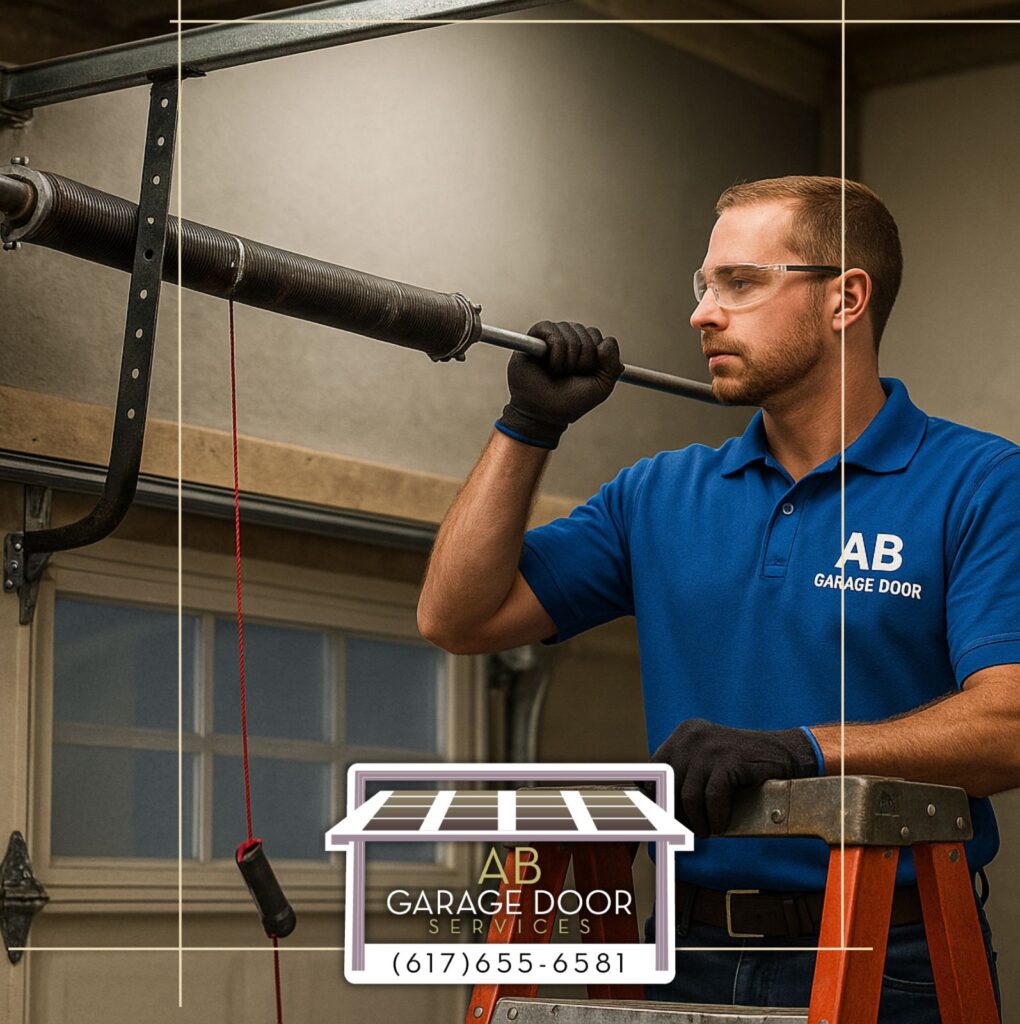Upgrading to a new garage door delivers a 194 percent return on investment, boosts curb appeal, and strengthens home security while improving energy efficiency. Homeowners juggling aesthetics, budget, and functionality face complex choices across pricing, door types, materials, insulation, styles, brands, installation, smart openers, and local services. This guide dismantles each aspect—starting with average replacement costs in 2025, through sectional vs. roll-up designs, steel and wood options, R-value comparisons, on-trend styles, top manufacturers, installation procedures, emerging smart systems, and strategies to find “new garage door sales near me.” By the end, you’ll understand how to select, finance, and install the ideal garage door that aligns with your home’s architecture, regional codes, and comfort goals.
The 2024 Remodeling Magazine Cost vs. Value Report indicated that garage door replacement yielded an estimated 194% return on investment (ROI), positioning it as the top home improvement project for resale value. This marked a significant increase from the 103% ROI reported in 2023.
This research directly supports the article’s claim that upgrading to a new garage door delivers a high return on investment, specifically citing the most recent authoritative report.
A typical garage door replacement in 2025 ranges from $1,200 to $2,400 for a standard single-car model, with higher-end materials and features increasing budgets. Understanding cost components ensures better planning and financing decisions.

The average cost for garage door replacement in 2025 typically ranges from $750 to $6,325, with an average around $2,743. Key factors influencing this cost include material selection (e.g., steel, wood, aluminum), door dimensions, insulation, and installation complexity. Professional installation labor costs generally range from $150 to $500.
This source provides current cost estimates and outlines the various factors that influence garage door replacement prices, aligning with the article’s detailed breakdown of expenses for 2025.
Replacement prices vary based on four main factors:
Material Selection determines base pricing and maintenance requirements.
Door Dimensions influence panel count, hardware complexity, and labor.
Insulation and Features such as high R-value cores, windows, and smart controls add to unit costs.
Installation Complexity—garage slope, opener integration, and site prep—affect labor rates.
These variables intertwine to shape final quotes and financing needs.
Professional installation typically costs $300–$600, whereas DIY averages $150–$300 in tool and hardware expenses.
Installation Type | Labor Cost Estimate | Typical Timeline |
|---|---|---|
Professional Service | $300–$600 | 3–5 hours |
DIY Project | $150–$300 | 6–10 hours |
Professional installers ensure correct spring tensioning, alignment, and warranty compliance, while DIY can save money but increases risk of misalignment and voided warranties, leading to potential repair costs.
Home improvement budgets expand through:
Zero-interest credit promotions offered by suppliers for 6–12 months.
Home equity lines of credit (HELOCs) with variable rates tied to prime.
Specialized equipment loans with fixed monthly payments.
In-house installment plans enabling 12–24-month payback at modest APRs.
These options improve affordability without delaying replacements
Garage doors fall into four primary categories, each suited to specific structural requirements and aesthetic goals. Understanding these types enables informed selections aligned with functional and design criteria.
Sectional Garage Doors segment into hinged panels on overhead tracks.
Roll-Up Garage Doors coil into a compact drum above the opening.
Tilt-Up (One-Piece) Doors pivot outward on horizontal hinges.
Side-Hinged Garage Doors swing open like traditional carriage doors.
Door Style | Operation Mechanism | Ideal Use Case |
|---|---|---|
Sectional | Linked panels on tracks | Insulated, quiet operation |
Roll-Up | Steel slats coil overhead | Space-saving in low-ceiling garages |
Tilt-Up (One-Piece) | Single solid panel pivot | Budget projects with simple hardware |
Side-Hinged | Hinged at vertical edges | Carriage-house aesthetics |
This breakdown directs attention to functional differences before exploring each type’s unique benefits.
Sectional garage doors improve energy retention through insulated panels and minimize ceiling intrusion by following track contours. These doors boost security with multi-locking hardware and dampen noise via rubber seals. Sectional designs also support window installations, enhancing natural light.
Material choice balances resilience, maintenance, and curb appeal. Selecting the right substrate enhances longevity and visual harmony with your home’s façade.
Steel delivers high strength, low upkeep, and competitive pricing.
Wood offers rich textures and custom stain options at a premium.
Aluminum, Fiberglass & Glass present lightweight frames, modern aesthetics, and corrosion resistance.
Material | Durability Rating | Maintenance Frequency | Style Flexibility |
|---|---|---|---|
Steel | High | Annual checks | Painted or embossed |
Wood | Moderate | Seasonal sealing | Custom carvings |
Aluminum | Moderate | Minimal washing | Sleek panel designs |
Fiberglass | Moderate | Occasional washing | Painted finishes |
Glass Panels | Low | Frequent cleaning | Contemporary look |
Steel garage doors enhance security through thick gauge panels and resist dents better than wood. Their powder-coat finishes maintain color vibrancy, and galvanized cores prevent corrosion. Steel’s compatibility with polystyrene or polyurethane insulation boosts R-value.
Wood garage doors feature natural grains and customizable stain options for traditional, craftsman, or carriage-house styles. While maintenance includes periodic sealing to prevent warping, wood’s organic appeal elevates property value and architectural coherence.
Aluminum frames with glass or fiberglass panels provide a lightweight, sleek door that resists rust in coastal regions. These materials support expansive windows or full-view designs, flooding attached garages with daylight while maintaining thermal stability through insulated cores.
Insulated garage doors reduce thermal transfer, stabilize attic and living-space temperatures, and lower HVAC loads. Investing in high R-value doors pays dividends in utility savings and year-round comfort.
Improved temperature regulation cuts heating and cooling expenses.
Noise reduction enhances indoor living by buffering street and lawn-equipment sounds.
Moisture control prevents condensation and paint peeling in attached garages.
Studies by the U.S. Department of Energy show that insulated garage doors can reduce overall home energy loss by up to 25% during extreme climate seasons. They also help maintain garage temperatures, keeping them an average of 10-20°F warmer in winter and 10-15°F cooler in summer compared to uninsulated garages.
This citation verifies the article’s claims regarding the energy efficiency benefits and temperature regulation provided by insulated garage doors, attributing the findings to a reputable government source.
R-value quantifies a door’s resistance to heat flow: higher R-values mean superior thermal barriers. An R-value of 12 to 18 on insulated doors can reduce energy loss by 25 percent compared to non-insulated models.
Polyurethane insulation offers higher R-values per inch (R-6.0–6.5) and rigid foam fill for structural strength, while polystyrene panels deliver moderate R-3.5–4.0 at lower cost. Polyurethane’s closed-cell chemistry resists moisture better, extending panel lifespan.
Upgraded insulated doors can lower annual energy bills by $200–$400, depending on climate. Attic temperatures in attached garages remain 10–20°F closer to ambient indoor levels, reducing HVAC runtime and promoting consistent interior comfort.


Selecting a style harmonizes your garage door with architectural themes, reinforcing curb appeal and property character.
Modern styles feature clean lines, frosted glass, and minimal hardware.
Traditional panels with raised or recessed designs suit classic homes.
Carriage House doors mimic old-world swing-open barns with decorative hinges.
Style | Key Feature | Architectural Pairing |
|---|---|---|
Modern | Frameless glass inserts | Contemporary and minimalist |
Traditional | Raised panel detailing | Colonial, Tudor |
Carriage House | Decorative strap hinges | Craftsman, Farmhouse |
Modern garage doors integrate frameless glass panels, flush aluminum frames, and powder-coat finishes to match minimalist facades. These elements enhance natural light and underscore geometric architecture.
Traditional doors feature symmetrical raised panels and crown molding profiles, while carriage-house designs add wood-look overlays, carriage handles, and faux strap hinges to evoke historic charm and tactile depth.
Farmhouse exteriors pair well with carriage-house doors and black hardware for rustic allure. Craftsman homes benefit from stained woodgrain or simulated wood overlays. Modern builds require seamless panels and neutral tones for a cohesive silhouette.
Leading manufacturers differentiate through materials, warranties, and customization options. Recognizing brand strengths helps match performance needs and budgets.
Clopay excels in insulated steel and specialty glass models.
Overhead Door offers extensive customization and smart-enabled openers.
Amarr focuses on durable carriage-house and traditional designs.
Wayne Dalton integrates innovative hardware and wind-load options.
Clopay garage doors feature polyurethane-injected steel panels with R-value up to 17.5, multi-layer construction for noise dampening, and seamless integration with proprietary smart openers for remote monitoring.
Overhead Door emphasizes heavy-gauge steel and reinforced hinges for high-wind regions, while Amarr delivers full-view aluminum frames and woodgrain composites for low-maintenance curb appeal. Both brands provide Lifetime Limited warranties on hardware.
Homeowners praise Wayne Dalton for precision-engineered tracks, smooth operation, and proprietary wind-load systems. Reviewers cite responsive customer service and clear installation instructions as key factors in overall satisfaction.
A professional installation follows a structured sequence to ensure safety, performance, and warranty compliance. Understanding each step prepares homeowners for scheduling, site preparation, and economic implications.
Site Inspection confirms opening measurements, spring system requirements, and structural support.
Hardware Removal safely dismantles old tracks, springs, and panels.
Door Assembly positions panels, installs tracks, rollers, and weather seals.
Spring Tensioning calibrates torsion or extension springs for smooth balance.
Opener Integration mounts the motor, configures sensors, and tests automatic functions.
Final Inspection verifies alignment, safety reversal, and noise levels.
This sequence underscores the importance of professional expertise for lasting performance.
Professional installers begin by verifying building codes, calibrating spring tension to match door weight, securing sectional gaps, and programming openers to industry safety standards. Completion includes homeowner orientation on maintenance and troubleshooting.
DIY installation appeals to seasoned DIYers experienced with mechanical systems and power tools. Risks include spring over-tensioning, track misalignment, and improper sensor wiring that can compromise safety and void warranties.
Always disconnect power before wiring openers.
Use spring winding bars rated for the specific torsion assembly.
Wear eye and hand protection when handling springs and cables.
Verify force-setting sensors reverse door on obstruction.
Following these precautions prevents injuries and ensures code compliance.
Smart garage door openers integrate IoT connectivity, enabling remote access, voice control, and real-time security alerts. This technology enhances convenience, security, and energy management.
Automation via mobile apps and voice assistants streamlines daily routines.
Security monitoring notifies homeowners of door status and intrusion attempts.
Usage analytics track open/close cycles to optimize energy and maintenance schedules.
Smart systems redefine sales conversations by prioritizing connected-home functionality.
Smart openers offer geofencing for automatic door operation, two-way encryption for data security, smartphone notifications, and integration with home automation platforms like Amazon Alexa and Google Home.
Integration relies on Wi-Fi or Bluetooth bridges that link opener controllers to central hubs. Home automation protocols synchronize door status with security cameras, lighting, and thermostat systems for seamless routines.
Smart garage doors detect forced entries through vibration sensors, auto-lock after closing, and send instant breach alerts to smartphones. Two-factor authentication and encrypted communication reduce hacking risks.
Discovering “new garage door sales near me” involves evaluating local providers on service quality, regional expertise, and responsiveness.
Local specialists deliver faster emergency responses and personalized consultations.
Regional climate knowledge ensures door selections withstand temperature and humidity extremes.
Familiarity with local building codes streamlines permit acquisition and installation approvals.
This approach maximizes project efficiency and regulatory compliance.
Local providers offer on-site estimates, expedited warranty service, and direct communication channels. Their regional reputation reflects service quality and customer satisfaction.
Cold climates demand higher R-value insulation, while coastal areas require rust-resistant materials. Building codes dictate wind-load ratings and fire-safety standards for attached garages, influencing product choices.
Search local business directories, read verified review platforms, and request quotes from multiple providers. Community recommendations and professional association listings ensure credible contractor selection.
A well-chosen local partner accelerates project completion and safeguards performance.
Upgrading to a new garage door combines enhanced security, energy savings, and aesthetic impact. By understanding costs, door types, materials, styles, brands, installation steps, smart features, and local service criteria, homeowners can confidently invest in a durable, stylish, and efficient entry system that aligns with both budgets and design goals.

HQ: 20 Cooper St, Waltham, MA, 02453
(617) 655-6581
8AM-8PM Sunday - Friday